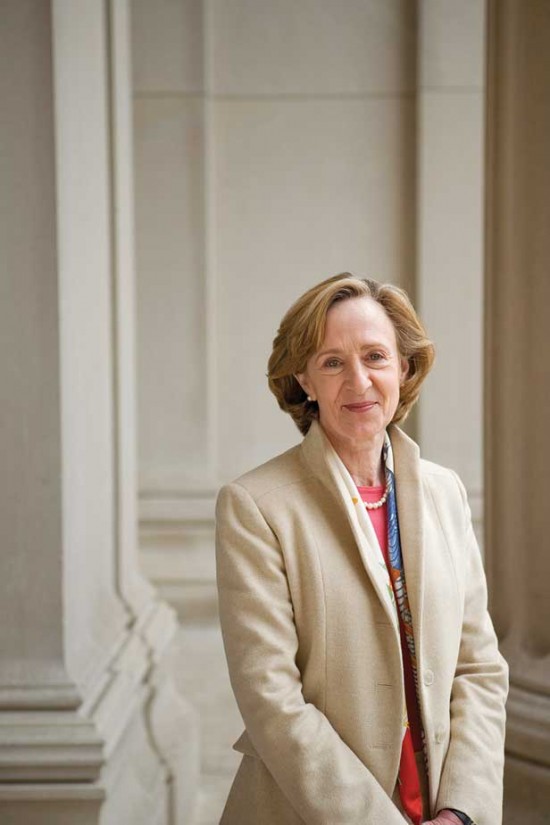End of the Hockfield Era
The MIT president is concluding a productive and creative tenure.



When Susan Hockfield steps down after eight years as MIT’s president, she will leave a remarkable legacy. In a tenure of many firsts, she will have done what she set out to do in 2004 when she was introduced as the Institute’s 16th president.
On that August day, she said her main goals would be to foster cross-disciplinary collaboration, to expand access to MIT, and to help the Institute “become even better at education, research, and invention.”
To further the first goal, Hockfield, the first biologist to serve as MIT’s president, has stressed blending research in the life sciences, the physical sciences, and engineering. That philosophy is at the heart of both the David H. Koch Institute for Integrative Cancer Research and the MIT Energy Initiative, which aims to help transform the way the world generates and uses energy. “Susan’s major contribution to MIT was creating, orchestrating, and sustaining MIT’s Energy Initiative,” says A. Neil Pappalardo ’64, a life member of the MIT Corporation. The initiative has raised more than $350 million, and more than 20 percent of the faculty has conducted research under its aegis.
To help widen the availability of an MIT education, Hockfield began the Campaign for Students in 2008. It raised more than $500 million for scholarships, fellowships, and improvement of student life. That helped increase undergraduate financial aid from $52 million in June 2004 to $92 million in June 2011. After alumni gifts allowed MIT to reopen the former Graduate House as an undergraduate dorm, the Institute increased undergraduate enrollment almost 10 percent, to 4,500 students. And her support for a rigorous system of online education led to plans for MITx, which will offer free versions of MIT classes to people worldwide. The first class—6.002, Circuits and Electronics—is already online.
Even amid economic turbulence, MIT’s finances have remained healthy. Hockfield hired a new financial-operations team in 2007, and by the time the financial crisis began in the United States in 2008, this group had a handle on the Institute’s finances. “The timing was impeccable—all the hatches were battened down just as the storm hit,” says Brian G. R. Hughes ’77, a life member of the Corporation. “It is something I am extremely grateful for.” The endowment rose from $5.9 billion when Hockfield took office to $9.7 billion in June 2011.
Her presidency marks MIT’s most successful period of fund-raising, with nearly $3 billion raised. But the intense effort involved in such endeavors prompted her decision to step down. MIT’s upcoming capital campaign “will require the full focus and sustained attention of the Institute’s president over many years,” she wrote in a February letter to the MIT community. “I have concluded that it would be best for the Institute to begin this next chapter with new leadership.” Hockfield, 61, will continue as president until a new one takes over; after that, she plans to remain on the faculty.
A committee made up of 12 members of the Corporation and 10 faculty members is searching for her successor. The chair is James A. Champy ’63, SM ’65, a Boston executive who headed the committee that nominated Hockfield in 2004. An advisory committee of three undergraduates and three graduate students will also be involved.
Kirk D. Kolenbrander, MIT’s vice president and secretary of the Corporation, says the search that led to Hockfield’s hiring lasted eight months and began with efforts to understand the attributes MIT desires in a president. Each search committee creates its own selection process, but he anticipates that this one will be similar. People in and outside the MIT community can offer their opinions at web.mit.edu/president/search.
In addition to her many accomplishments, Hockfield earned a place in history as MIT’s first female president. “It’s already hard to remember how historic it was that a woman was chosen to be the president of MIT at that time,” says biology professor Nancy Hopkins. “The day President Hockfield was introduced to the MIT community—in a packed room 10-250—many women came up to me literally in tears, wanting to share their emotion. They were so moved that this had happened.”